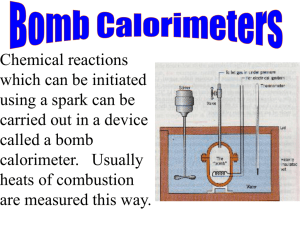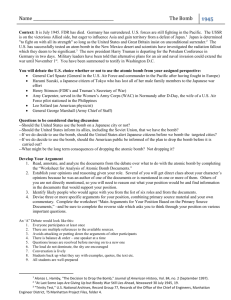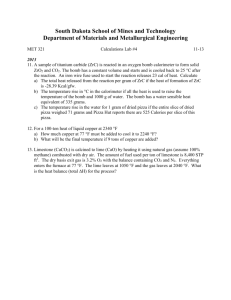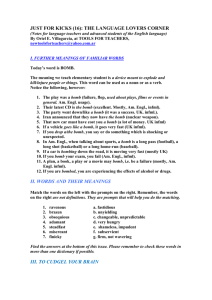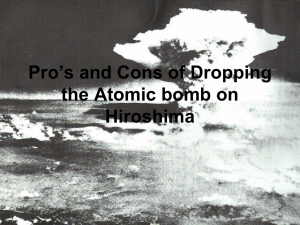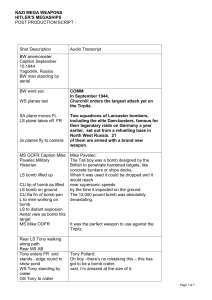Calorimetry
advertisement
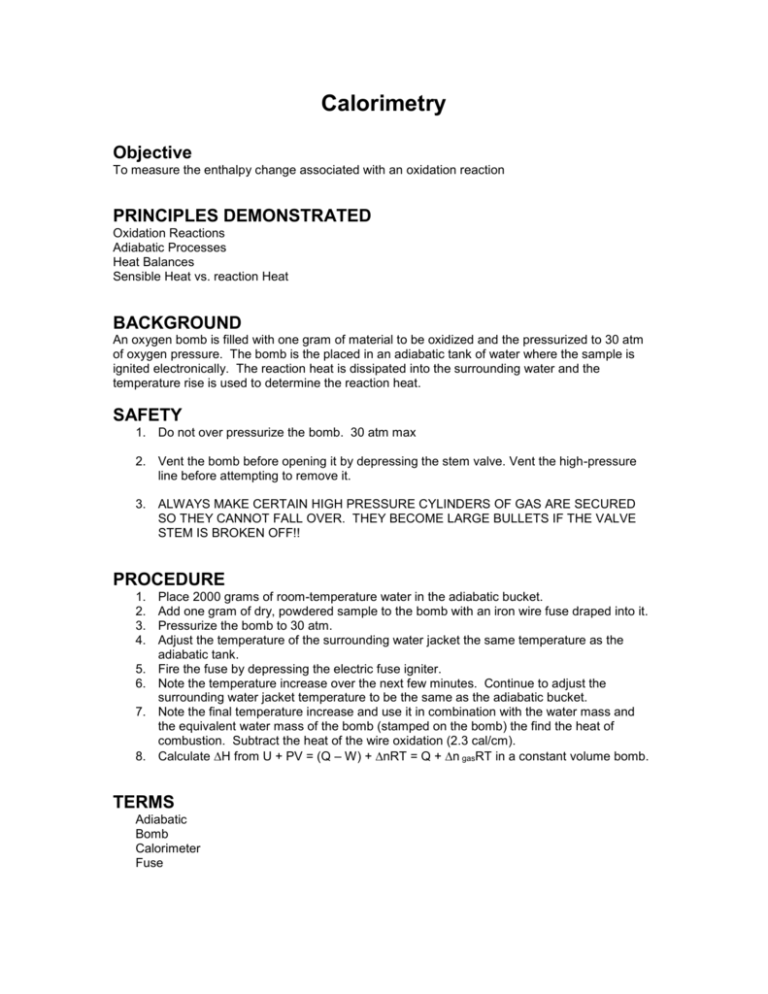
Calorimetry Objective To measure the enthalpy change associated with an oxidation reaction PRINCIPLES DEMONSTRATED Oxidation Reactions Adiabatic Processes Heat Balances Sensible Heat vs. reaction Heat BACKGROUND An oxygen bomb is filled with one gram of material to be oxidized and the pressurized to 30 atm of oxygen pressure. The bomb is the placed in an adiabatic tank of water where the sample is ignited electronically. The reaction heat is dissipated into the surrounding water and the temperature rise is used to determine the reaction heat. SAFETY 1. Do not over pressurize the bomb. 30 atm max 2. Vent the bomb before opening it by depressing the stem valve. Vent the high-pressure line before attempting to remove it. 3. ALWAYS MAKE CERTAIN HIGH PRESSURE CYLINDERS OF GAS ARE SECURED SO THEY CANNOT FALL OVER. THEY BECOME LARGE BULLETS IF THE VALVE STEM IS BROKEN OFF!! PROCEDURE 1. 2. 3. 4. 5. 6. 7. 8. Place 2000 grams of room-temperature water in the adiabatic bucket. Add one gram of dry, powdered sample to the bomb with an iron wire fuse draped into it. Pressurize the bomb to 30 atm. Adjust the temperature of the surrounding water jacket the same temperature as the adiabatic tank. Fire the fuse by depressing the electric fuse igniter. Note the temperature increase over the next few minutes. Continue to adjust the surrounding water jacket temperature to be the same as the adiabatic bucket. Note the final temperature increase and use it in combination with the water mass and the equivalent water mass of the bomb (stamped on the bomb) the find the heat of combustion. Subtract the heat of the wire oxidation (2.3 cal/cm). Calculate H from U + PV = (Q – W) + nRT = Q + n gasRT in a constant volume bomb. TERMS Adiabatic Bomb Calorimeter Fuse


